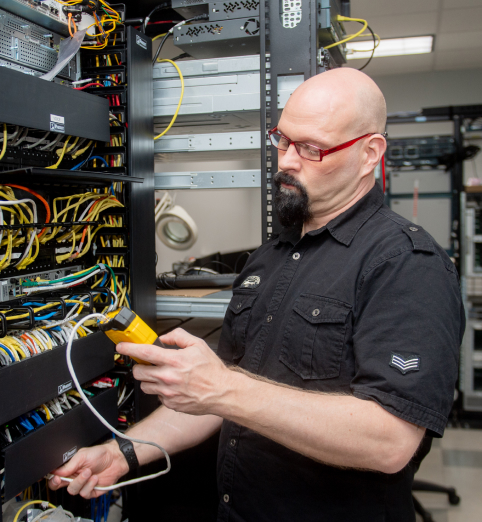Ever watch Storage Wars? The reality TV show follows people who purchase abandoned storage units at auction, in hopes of acquiring a forgotten treasure trove of items that can be resold at top dollar. IT closets and surplus storage rooms are a similarly overlooked source of value for companies. Packed with forgotten equipment that’s gathering dust, these storage rooms are not only taking up space, they’re housing items that could be adding dollars back to your IT budget.
While you’re planning budgets and preparing purchase orders for next year’s equipment, don’t forget to factor in what will happen with the hardware you replace and decommission. You might be leaving value on the table—or, in the closet—that could offset some of those new purchases.
IT Junk Closet Treasure Hunt
Chances are, unless you dig out an inventory list, you can’t recall most of what’s sitting in IT storage. But a lot of the equipment you no longer need could command a healthy return in the secondary market. Like Storage Wars stars, you just need to know what to look for and put in the effort to cycle those items out for resale.
It’s no surprise that enterprise-level hardware—like servers, storage, and networking equipment—tend to command the highest resale value compared to an individual laptop. But don’t write off those lower ticket items just yet—especially if you have a lot of them. While a single laptop may not be worth much, if you recently replaced laptops for an entire department, that high volume of laptops has more value. Same goes for other endpoint devices, like printers, tablets, barcode scanners, and monitors.
Tips for Maximizing Value
Have we convinced you to take a peek at those junk closets in search of forgotten IT treasures? Here are a few things you can do to capture the highest return possible.
- Sell quickly to avoid depreciation. Periodically sifting through your existing unused inventory for potential resale is never a bad idea. But an even better approach is to never let decommissioned items find their way into storage to begin with. Technology depreciates quickly, so the newer equipment, the more money you’ll put back into your pocket.
- Wipe data—not functionality. A crucial step in preparing your equipment for resale is erasing data. But often companies take this too far and completely wipe out a device’s configurations and operating system, which isn’t always necessary and actually decreases the overall value and makes it harder to sell.
- Keep units intact. Related to the point above, some companies mistakenly think the only way to effectively guard against leaked data is by pulling out and destroying the memory or processors from equipment before resale. But for a server, for example, the value is its memory and processor. A better approach is to erase the data, while leaving the memory and processor intact.
- Don’t underestimate appearances. Sure, that dust, dirt, smudge, or scratch may not affect actual performance. But something as simple as taking the time to tend to the cosmetic appearance of your hardware can boost your return.
Inteleca’s Asset Recovery Process
The prospect of clearing out your unneeded tech and getting a healthy return on it sounds great! But we get it—it’s not as easy as listing that expensive clothes hanger (aka your exercise bike) on Facebook Marketplace. There aren’t enough hours in the work week to assess and price equipment, appropriately prepare it for resale, list it, manage transactions, package it up, and send it off.
And beyond the obvious logistics, if it’s something your company has never done before, there are the inevitable conversations you know you’ll have to have with departments like legal, accounting, and finance to figure out how to even make this work.
Inteleca’s turn-key ITAD services makes the process dead simple and tailor-fit to your company and needs:
- You pull together the unused tech equipment you want to sell.
2. We facilitate all the necessary conversations across departments. We’ve done this for hundreds of companies and know all the common questions, concerns, potential problems—and how to address them.
3. We then review the equipment and send you an estimated value. If, during the review process, we discover “hidden” value (like things you overlooked), we’ll let you know. We’ll even make recommendations for repurposing equipment for other projects or parts of the company, if we think it’ll serve you better than selling.
4. Next, we work with you to figure out the best way to handle the sale. Some of our clients prefer we buy all the equipment from them outright. Some want to sell based on consignment, where we each get a percentage of the final resale. Other clients prefer selling to us in exchange for credit they can use to products that we help them procure in the future. The choice is entirely yours.
5. Then your equipment is wiped, sanitized, and prepared for resale. Our data erasure process complies with NIST 800-88 standards, and you’ll receive a certified report that all data has been erased or destroyed (depending on the circumstance and what’s needed).
6. Finally, we take care of all product listing, sale, packaging, and shipping.
To learn more about our flexible IT Asset Lifecycle Management services and how we can turn your tech surplus into dollars for your IT budget, schedule a call with one of our engineers today.



